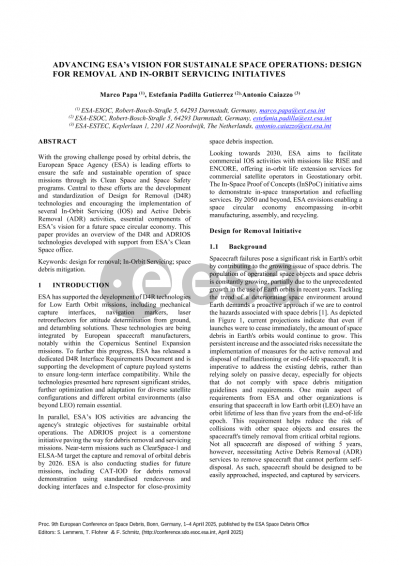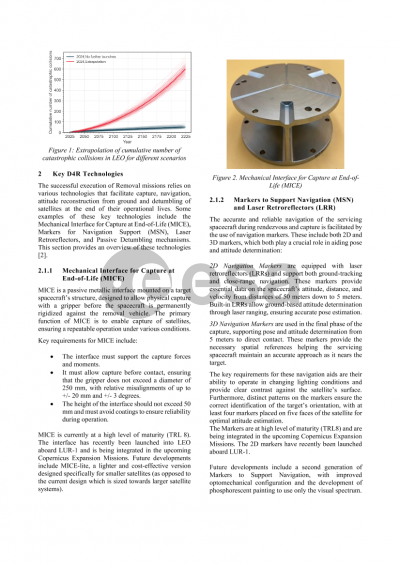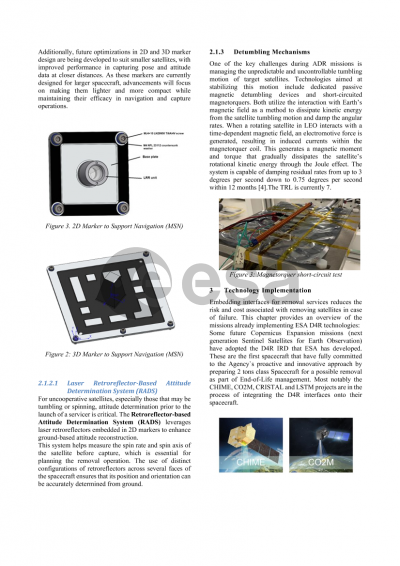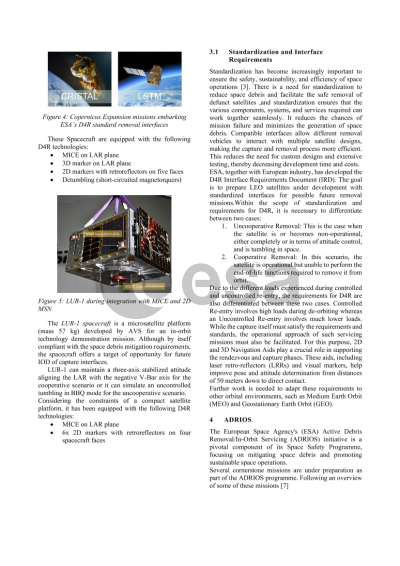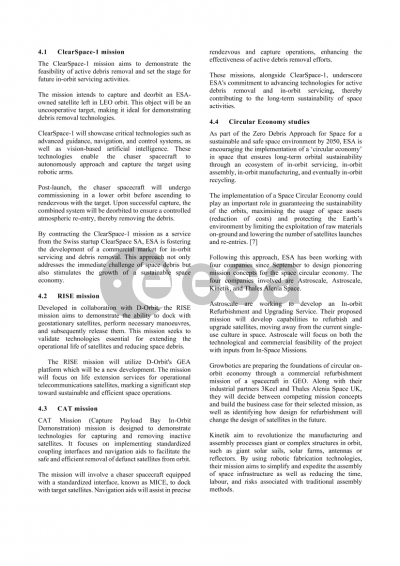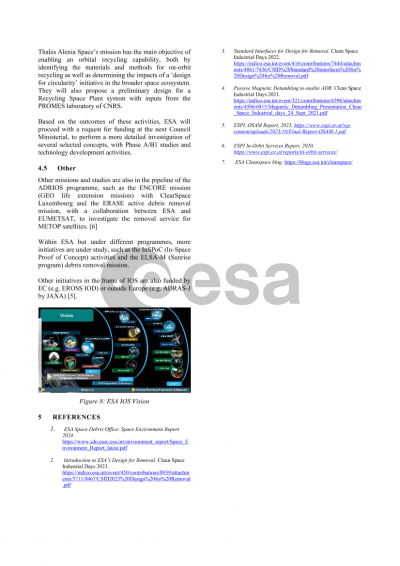Document details

Abstract
With the growing challenge posed by orbital debris, the European Space Agency (ESA) is leading efforts to ensure the safe and sustainable operation of space missions through its Clean Space and Space Safety programs. Central to these efforts are the development and standardization of Design for Removal (D4R) technologies and encouraging the implementation of several In-Orbit Servicing (IOS) and Active Debris Removal (ADR) activities, essential components of ESA’s vision for a future space circular economy. This paper provides an overview of the D4R and ADRIOS technologies developed with support from ESA’s Clean Space office.
ESA has supported the development of D4R technologies for Low Earth Orbit missions, including mechanical capture interfaces, navigation markers, laser retroreflectors for attitude determination from ground, and detumbling solutions. These technologies, qualified to TRL 8, are being integrated by European spacecraft manufacturers, notably within the Copernicus Sentinel Expansion missions. To further this progress, ESA has released a dedicated D4R Interface Requirements Document and is supporting the development of capture payload systems to ensure long-term interface compatibility. While the technologies presented here represent significant strides, further optimization and adaptation for diverse satellite configurations and different orbital environments (also beyond LEO) remain essential.
In parallel, ESA’s IOS activities are advancing the agency's strategic objectives for sustainable orbital operations. The ADRIOS project is a cornerstone initiative paving the way for debris removal and servicing missions. Near-term missions such as ClearSpace-1 and ELSA-M target the capture and removal of orbital debris by 2026. ESA is also conducting studies for future missions, including CAT-IOD for debris removal demonstration using standardised rendezvous and docking interfaces and e.Inspector for close-proximity space debris inspection.
Looking towards 2030, ESA aims to facilitate commercial IOS activities with missions like RISE and ENCORE, offering in-orbit life extension services for commercial satellite operators in Geostationary orbit. The In-Space Proof of Concepts (InSPoC) initiative aims to demonstrate in-space transportation and refuelling services. By 2050 and beyond, ESA envisions enabling a space circular economy encompassing in-orbit manufacturing, assembly, and recycling.
This presentation provides a comprehensive overview of how, through these integrated efforts, ESA is establishing new benchmarks for sustainable space operations, advancing innovations in D4R and IOS technologies. This strategy highlights the steps ESA is taking to secure a sustainable future in space.
Preview
